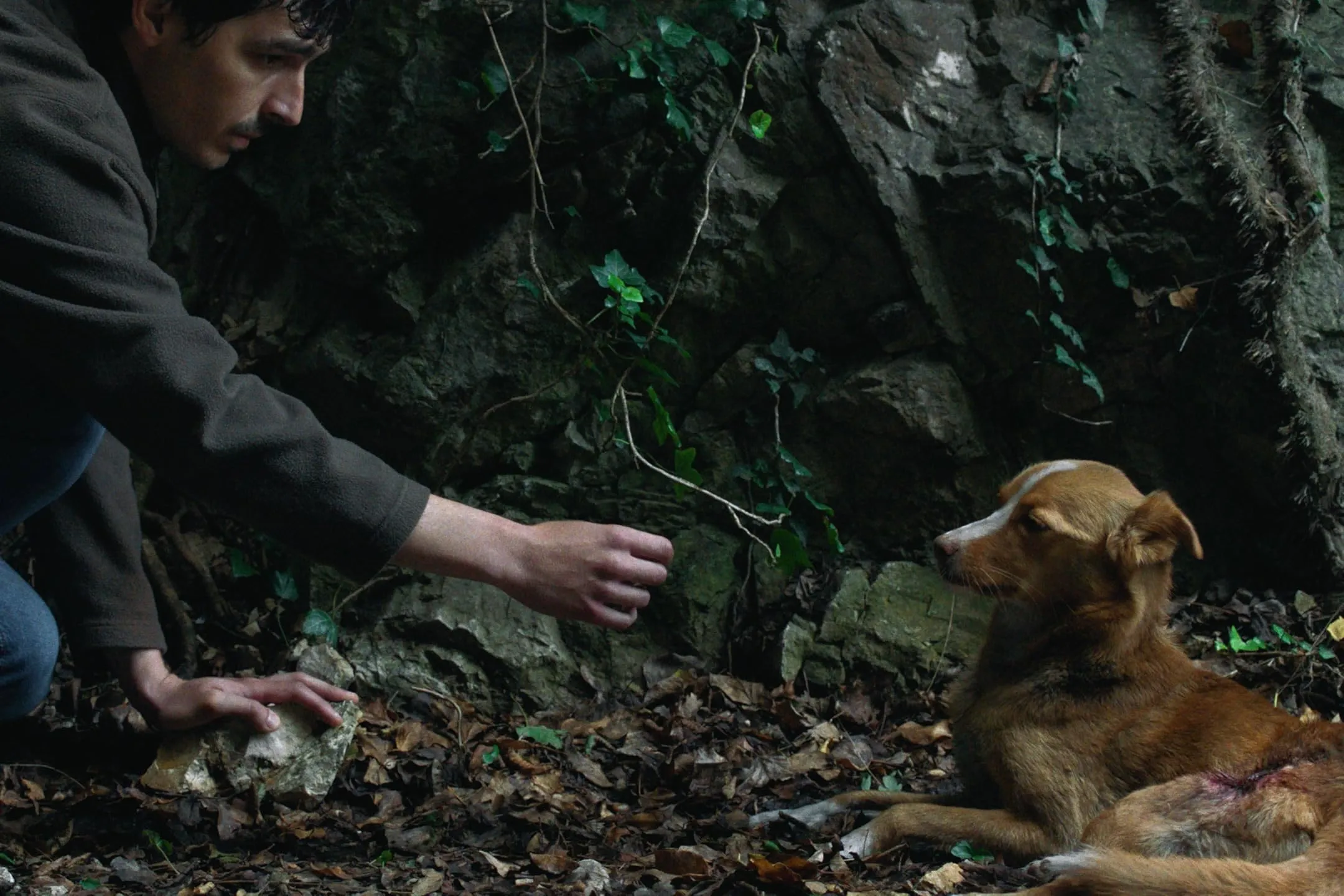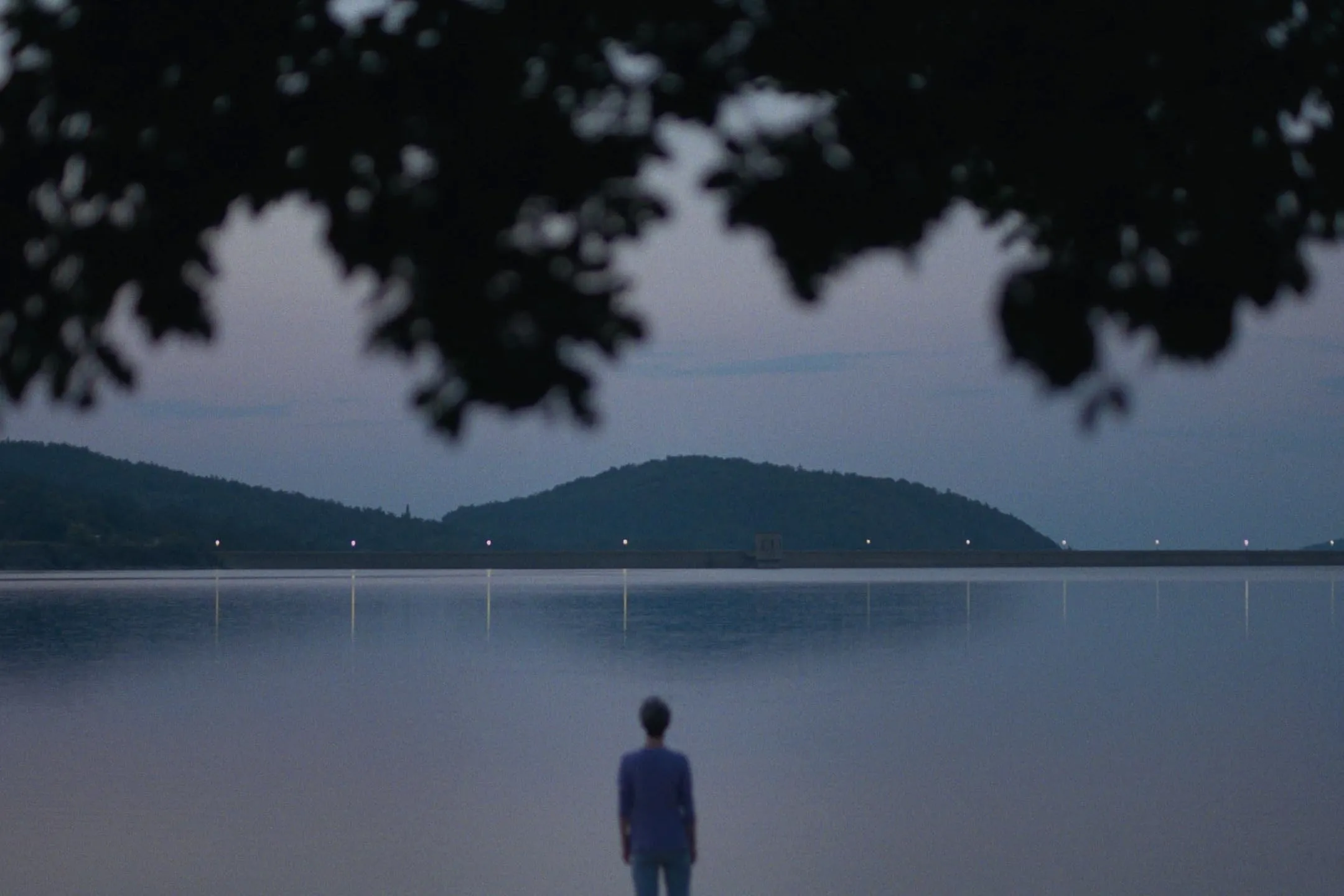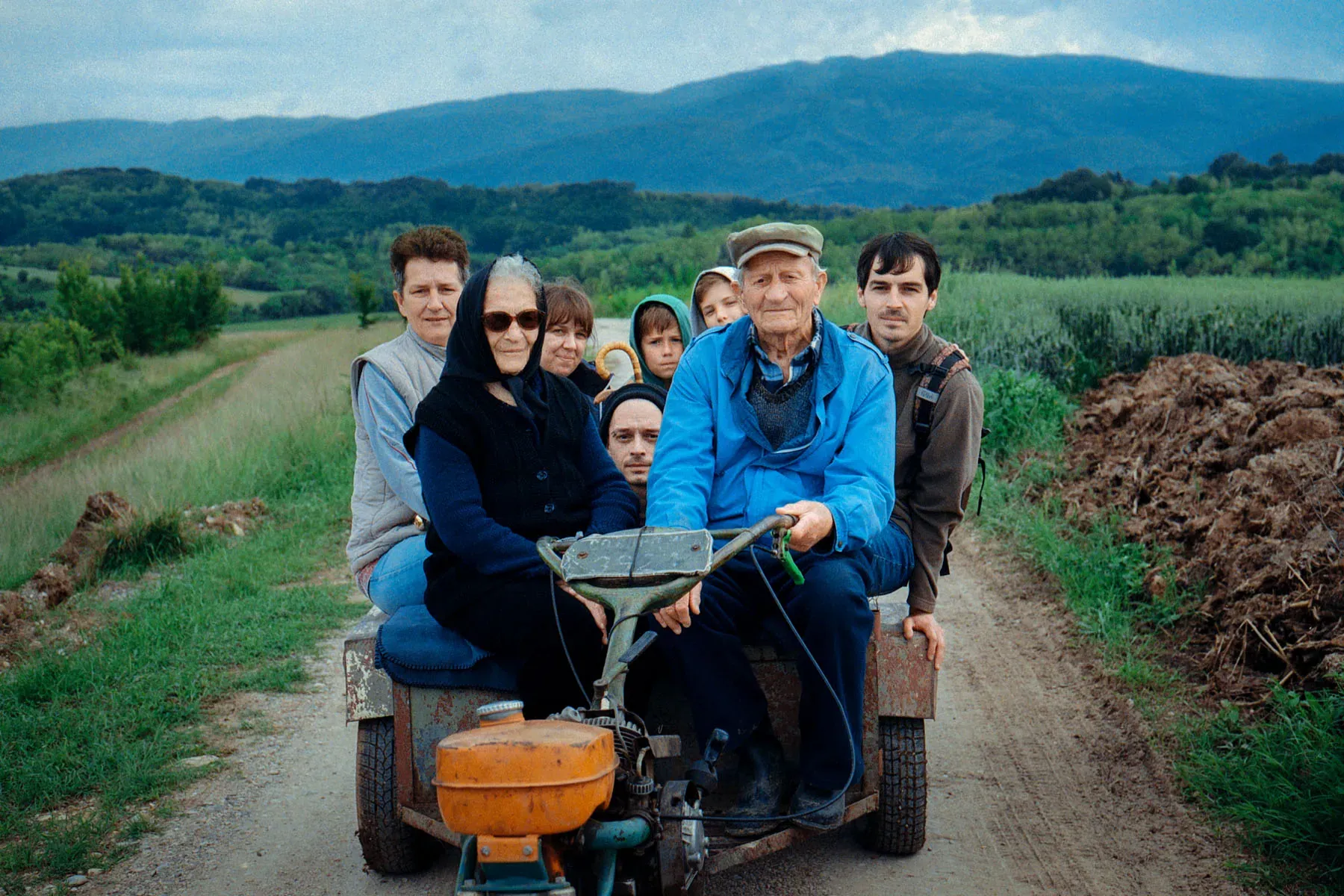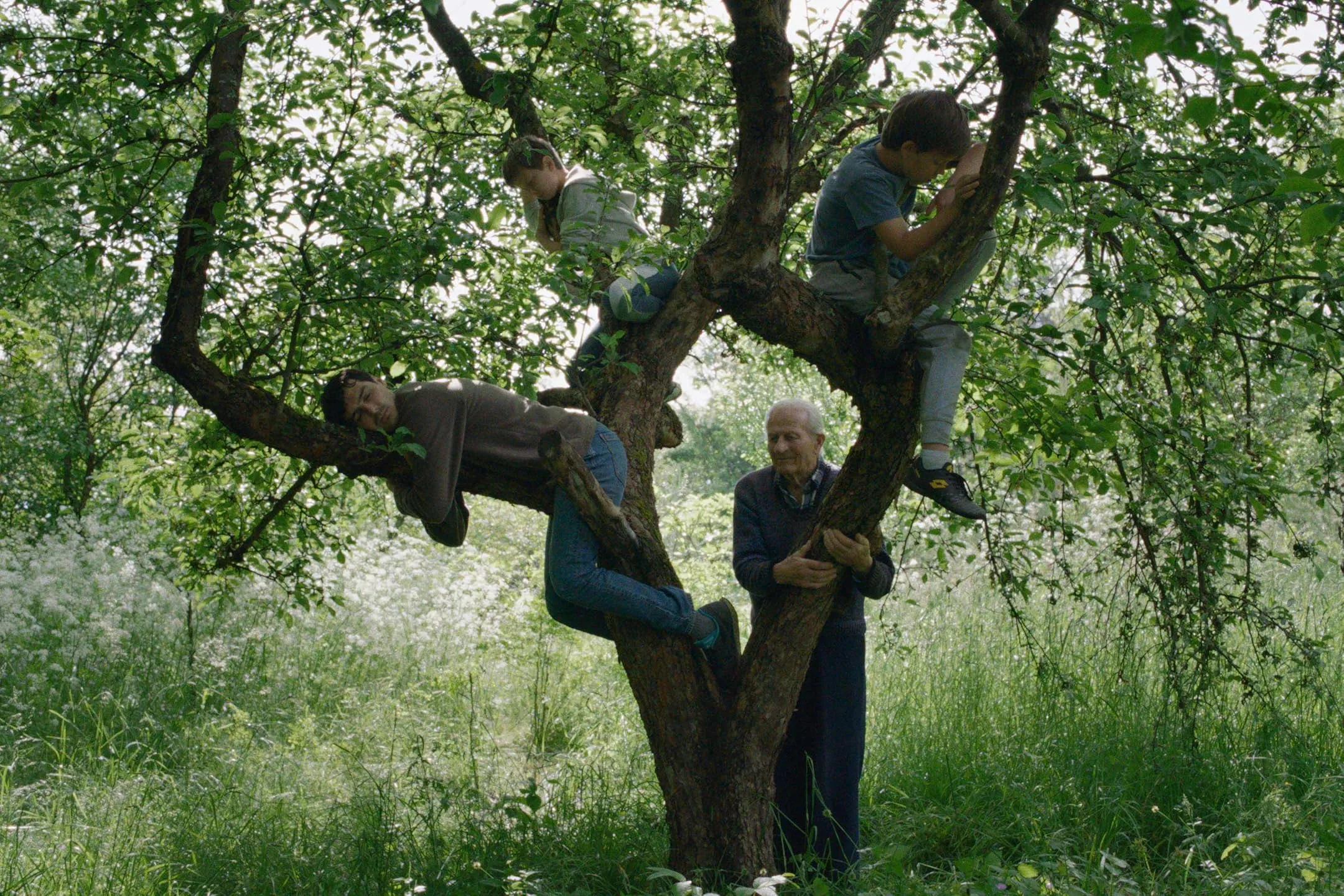Stefan Djordjevic’s film unfolds as a poetic meditation on loss and remembrance. Originating from a deeply personal project meant to honor his late mother, Negrica, the work evolves into a sensitive portrayal of familial bonds set against the rugged charm of the Serbian countryside. A lakeside cabin becomes both sanctuary and stage, reflecting the quiet dignity of life’s impermanence. Filmmaker and subject merge in a narrative that interlaces archival footage with carefully staged moments, forming a reflective account of life after bereavement.
The film places the natural world at the forefront, with the wind serving as a persistent and enigmatic presence. Its gentle murmur and sporadic gusts evoke memories and stir emotions, casting the landscape in a light that is both tender and stark. As the camera captures expansive views of weathered terrains and intimate family gatherings, a subtle meditation on renewal is set in motion.
In particular, the portrayal of the dog Lija, adopted in the wake of a tragic mishap, symbolizes the quiet power of small, decisive acts that mend the fractures of loss. Each frame invites an examination of how nature and kinship collaborate to forge an enduring connection with the past, shaping a narrative that speaks softly yet firmly to the essence of human resilience.
A Lyrical Lens on Memory and Atmosphere
The film unfolds through a series of static, carefully measured shots that capture unguarded expressions and spontaneous moments. The framing is deliberate, maintaining a respectful distance that reveals an organic interplay between human subjects and the rugged environment. This measured approach to composition crafts images that are both precise and tender, drawing attention to the quiet interplay of emotions without overt manipulation.
Natural light plays a key role, imbuing each scene with a delicate softness. Muted tones and gentle shifts in illumination evoke a feeling of quiet introspection, as if the screen itself is absorbing and reflecting the solemn rhythm of nature. The interplay of light and shadow not only softens the raw edges of grief but also injects an element of hushed mystery. Every ray and every half-light echoes the rhythms of a landscape that remains ever-present and all-encompassing, where even the play of twilight speaks in visual murmurs.
The setting emerges as an active participant in the narrative. The lakeside cabin and surrounding wilderness in Bor, Serbia, serve as more than mere backdrops; they register the enduring marks of memory and loss. The process of renovating a long-cherished summer camp creates layers of time, blending the tangible with the ephemeral. This environment carries the residue of past joys and tragedies, its textures and natural decay meticulously recorded by the lens.
Striking symbolic visuals punctuate the narrative—most notably the recurring presence of the wind. Captured through thoughtful imagery, the wind becomes a silent narrator, its restless movement a subtle counterpoint to the stillness of the family’s shared grief. Close-up details of weathered textures and the spontaneous interplay of human expressions with elemental forces craft a visual dialogue that speaks in muted yet resonant tones.
Temporal Dialogues and Narrative Fluidity
Stefan Djordjevic crafts a narrative that spans two temporal realms, seamlessly merging personal footage with meticulously staged reenactments. The film’s structure functions as a continuous play of images—fragments captured before loss interwoven with present-day recordings—which creates a canvas where past encounters and present reflections exist side by side. This approach transforms the act of remembering into an organic ritual, one where the elapsed time is rendered with the quiet efficiency of visual poetry.
The interlacing of archival and current material produces a canvas in which the progression of grief unfolds in episodic vignettes. Non-linear progressions and shifts in temporal focus render an experience that mirrors the complex state of mourning—a state in which recollections arise unexpectedly, merge with the present, and dissipate as softly as morning mist.
Quiet sequences of observational intensity are interspersed with sharper, dialogue-driven interludes that capture the residue of intimate exchanges, such as the resonant interplay between a mother’s recorded words and their echo within the familial gathering.
A particular narrative note is struck by the depiction of Lija, the canine presence whose arc converges with the film’s thematic currents. Her role emerges as a silent emblem of recovery, her subtle presence reinforcing the notion that healing may manifest in the gentlest forms. In this confluence of memory and immediacy, the film invites its viewers into a reflective dialogue where each carefully composed frame contributes to a rhythmic conversation between what was once experienced and what is now observed.
Ephemeral Dialogues of Memory
The film articulates loss and recovery with a sensitivity that echoes through its symbolic imagery. Bereavement emerges as a delicate dance between personal sorrow and a shared, familial acknowledgment of absence. Creative expression becomes a quiet instrument of healing, a form of tribute that transcends the immediacy of grief. In the interplay between intimate recollection and expressive artistry, the narrative frames the mourning process as a soft, collective recalibration of identity.
Nature materializes as a profound symbol, where the constant murmur of the wind and the undulating landscape mirror quiet internal states. The persistent presence of natural sounds hints at an enduring continuity that exists beyond the temporal confines of loss.
Each gust and rustle articulates a silent dialogue with the characters, intertwining physical surroundings with the subtle tremors of remembrance. The film’s use of open vistas and the aged textures of outdoor settings intensifies the sense of a living, breathing environment—one that holds a mirror to the soul of mourning.
Memory and legacy take form in the careful interspersion of archival glimpses and candid familial exchanges. The lakeside cabin, worn by time yet imbued with a quiet dignity, becomes a living repository of shared reminiscences. Personal artifacts and lingering visual motifs—such as a solitary hand resting on weathered bark—offer a visual lexicon that speaks to fragility and quiet fortitude.
These recurring images function as a silent dialogue between elements of nature and the experiences of the characters, suggesting an unspoken pact of remembrance and quiet renewal. The imagery does not simply represent a static record but rather breathes life into the process of recollection, evoking a persistent, almost tangible, presence that redefines the landscape of loss.
Faces of Reverie and Connection
Djordjevic occupies the screen as both storyteller and subject, his presence oscillating between intimate witness and measured participant. His portrayal of personal bereavement is rendered without ostentation, presenting grief in its unvarnished form while reflecting on the shifting moods within his familial circle. His sensitive yet deliberate stance invites a scrutiny of loss that is observed with clarity and consistency.
Family members present throughout the narrative contribute distinct shades to this unfolding portrait of remembrance. From the expressive glances of elders to the spontaneous exchanges among younger kin, the depiction of each character contributes to a living record of shared remembrance. The film captures offhand interactions—a lingering pause during a meal, a quiet exchange in a sunlit room—each moment resonating with the weight of collective memory.
The use of natural performances further underscores the authenticity of these interpersonal dynamics. Conversations occur with unforced cadence and a familiarity that reinforces the understated power of unscripted dialogue. In this environment of sincere human connection, subtle gestures speak volumes, their eloquence manifest in brief moments that illuminate deeper layers of understanding.
Lija, the dog, emerges as a symbol of renewal and gentle reparation. Her gradual transformation from a wounded stray into a figure of comfort mirrors the gradual easing of sorrow shared by all those present. Through her, the film articulates a quiet evolution from isolation to soft reconciliation, her presence a steady echo within the family’s ongoing ritual of remembrance.
Sonic Veracity and Artful Rhythm
The sound design merges ambient whispers and organic acoustics, sculpting a meditative cadence that stands as a counterpoint to the film’s still visual language. Layers of natural ambience—wind murmurs and the gentle rustle of leaves—form an unobtrusive foundation, interwoven with delicate cues of dialogue that punctuate moments of quiet intensity.
Ivan Judaš’s synth compositions infuse scenes with measured gravity, lending an emotional texture that echoes the reflective nature of the narrative. Editing interlaces archival fragments with present-day recordings through smooth transitions that maintain an unhurried pace.
Each cut is executed with precision, drawing the viewer into a rhythm that marries the spontaneous with the meticulously orchestrated. The synergy of sound and editing creates a subtle yet compelling thread, one that infuses the film with a cohesive pulse and enhances its introspective dialogue with the natural world.
Full Credits
Director: Stefan Djordjević
Writers: Stefan Djordjević
Producers: Stefan Djordjević, Ognjen Glavonić, Stefan Ivančić, Dragana Jovović, Vanja Jambrović, Jožko Rutar, Miha Černec
Cast: Negrica Djordjević, Stefan Djordjević, Boško Djordjević, Đorđe Davidović, Budimir Jovanović, Ljiljana Jovanović, Marina Davidović, Ana Petrović, Vidak Davidović, Lija
Director of Photography (Cinematographer): Marko Brdar
Editors: Tomislav Stojanović, Dragan von Petrovic
Composer: Ivan Judas
The Review
Wind, Talk To Me
Wind, Talk to Me stands as an intimate exploration of loss and renewal, blending personal recollection with cinematic poetry. Its measured pace, thoughtful craftsmanship, and evocative sonic landscape create a delicate tribute to family resilience and nature’s enduring presence. The film challenges conventional norms with its quiet power and reflective imagery, offering a nuanced portrayal of mourning and recovery that lingers in memory.
PROS
- Poetic blend of documentary and dramatic elements
- Evocative cinematography and sound design
- Deeply resonant exploration of grief and healing
- Authentic family dynamics and naturalistic performances
CONS
- Deliberate pace may test viewer patience
- Non-linear narrative might challenge traditional storytelling expectations
- Subtle tonal shifts may not suit all audiences




















































